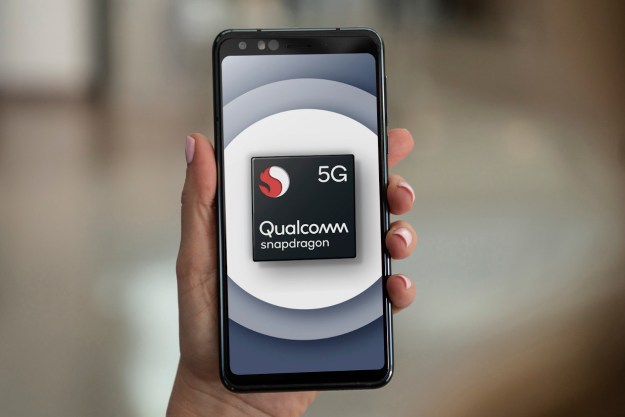This week during the Mobile World Congress in Barcelona, Spain, Qualcomm’s director of Product Management Monte Giles indicated that the company’s Snapdragon processors could power high-end Chromebooks in the near future. He said Qualcomm wasn’t interested in the sub-$300 Chromebook market. Instead, the company is keeping a close eye on the Chromebook market with units starting at $500.
The news arrives after Qualcomm revealed its “Always Connected” initiative with Microsoft to produce Windows 10 laptops. Revealed at the end of 2017, these devices will rely on Qualcomm’s Snapdragon 835 processor, and not its newer 845 chip. They’re slated to arrive in March by notebook makers HP, Lenovo, and Asus packing 4G LTE connectivity by default, and a crazy battery lifespan of more than 20 hours on a single charge.
Naturally Qualcomm wants to target high-end Chromebooks, too. The company is supposedly testing units with its newer Snapdragon 845 flagship chip rather than the 835 model and its lesser-powered solutions. The move would be an interesting change for the overall Chromebook market given that units typically rely on low-power processors supplied by Intel, MediaTek, and Rockchip.
For example, Lenovo just introduced three new Chromebooks this week during the show: the 100e packing Intel’s Celeron N3350 processor, the 500e with Intel’s Celeron N3450 chip, and the 300e with processor solutions up to MediaTek’s MTK 8173C chip. Intel’s N3350 is a dual-core chip with a base speed of 1.10GHz whereas the Celeron N3450 is a four-core chip with a base speed of 1.10GHz.
Meanwhile, Qualcomm’s Snapdragon 845 is an eight-core chip with a built-in 4G LTE modem, a unit dedicated to security, built-in Wi-Fi connectivity, a dedicated artificial intelligence processor for images, voice, and games, and more. The chip is making its first appearance in Samsung’s Galaxy S9 smartphones, packing cool features like an iris scanner, support for HDR content, AR emoji stickers, a true edge-to-edge screen, and so on.
But Qualcomm wants to see its new flagship in bigger and better devices, such as high-end Chromebooks. According to Giles, these units will likely be thin, light, and fanless, targeting small to medium businesses looking for a Windows-free notebook with a crazy-long battery life. And although he didn’t mention 4G LTE connectivity, this feature built into the Snapdragon 845 would indeed be a major selling point for companies looking to power traveling executives and remote workers with the best Windows-free device.
But why only target the high-end Chromebook market? Giles points to Android tablets, which are declining in sales as customers move to Chromebooks and Windows-powered 2-in-1 devices. You also don’t see Android-powered laptops, but rather Chromebooks that support Google Play and Android-based apps and games.
“[Qualcomm] sees more value in the premium tier, and that’s why we’ve really embraced Windows,” he said. Additional news regarding Qualcomm’s venture into premium Chromebook territory will be revealed at a later date, Giles added, so stay tuned.
Editors' Recommendations
- Powerful Snapdragon 8cx Gen 2 Chromebooks could be coming soon
- Meet the Snapdragon 8 Gen 1, Qualcomm’s flagship mobile chip for 2022
- The HP Chromebook x2 11 is a premium 2-in-1 run by a Qualcomm Snapdragon chip
- Qualcomm Snapdragon 8cx vs. Intel Core i5
- The car of the future? Qualcomm unveils 4th-gen Snapdragon auto platform


